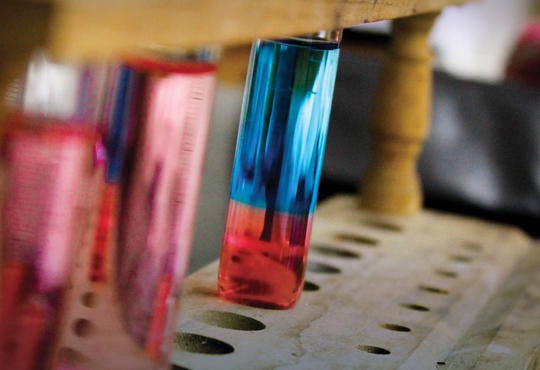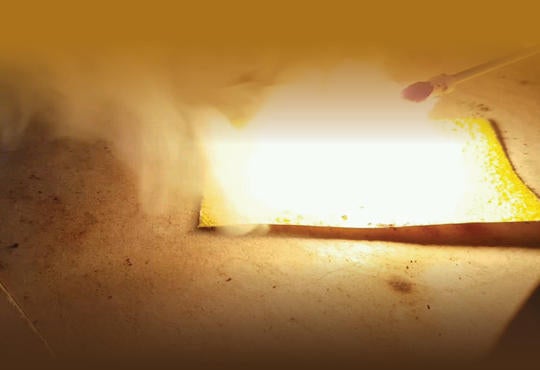 If you have ever taught an AP Chemistry course, you know that between the required labs and the amount of theory, it is difficult to have moments where you relate the topics in AP Chemistry to what we do in the real world. For the last three years, I have assigned a “themed chemistry survival” project. This project allows for creativity and a great deal of fun, along with often expanding high school chemistry topics. The concept of survival chemistry has immediate buy-in from the students because most are familiar with the survival reality shows. It is a chance for students to enjoy and learn from their classmates’ videos.
If you have ever taught an AP Chemistry course, you know that between the required labs and the amount of theory, it is difficult to have moments where you relate the topics in AP Chemistry to what we do in the real world. For the last three years, I have assigned a “themed chemistry survival” project. This project allows for creativity and a great deal of fun, along with often expanding high school chemistry topics. The concept of survival chemistry has immediate buy-in from the students because most are familiar with the survival reality shows. It is a chance for students to enjoy and learn from their classmates’ videos.
The theme of survival chemistry is based on how chemistry can save you in the wild. The project requires them to create a video based on their topics with demonstrations or examples. From a hat, students randomly select a topic from my compiled list. Samples of just a few topics are listed here:
- I can’t make a fire — everything’s wet, but I do have some funky minerals and glycerin. Hmmm…
- I’m stranded on an island with a boat with a diesel engine and no fuel. I do have corn oil. Did someone say biofuel?
- Oh my God, there’s nothing to drink except my own urine! But I’m not Bear Grylls, I like my pee purified thank you. Please note: the use of actual urine is STRICTLY prohibited in this demo.
To see the level of engagement, I recommend you take a few minutes and view some of the videos of projects produced by my students on our blog site:
Villanova College Chemistry Blog
Survival Chemistry https://villanovachemistry.wordpress.com/2016/11/21/survival-chemistry/
Because this is group work, to assess groups fairly students create their own rubrics well before the projects begin. This is part of the process of planning their videos and allows for fair individual assessment within groups. It also follows the assessment as learning described in the Growing Success documents.1 From the teacher’s point of view, this is admittedly the most time consuming part of the project. A teacher must give careful feedback on what is needed to help students delegate their work.
Having the projects as videos allows the timeframe to be controlled. It also allows students to view all the videos later in case there is an opportunity to refer to a topic within the video and further peer assessment. The project can allow for students who want to make some explosions (minor and safely with guidance) to have that opportunity — this is the reason some students decided to take chemistry in the first place. Students can have a chance to delve deeper into the electron delocalization of pigments, create green biofuel or even explore molecular orbital theory to create magnets for a compass.
The presentations are spaced out on different days, placing the more time-consuming presentations towards the end. Students are required to engage the class with hands-on demos and quizzes. It’s a lot of work, but doing this activity allows students to learn about distillation, the practical applications of redox reactions, the energy in biofuel and the technology for analysis, and the deeper chemistry of pigments and alkaloids. The additional benefits are learning outcomes which incorporate creativity, team work and peer review. We have submitted some of the videos for contests, and we have had prize winners. More importantly, the students had an outlet for their creativity, to blow things up, learn from each other and perhaps educate others in the world at the same time.
Reference
- Growing Success, Assessment, Evaluation, and Reporting in Ontario Schools, 2010, www.edu.gov.on.ca/eng/policyfunding/growSuccess.pdf







